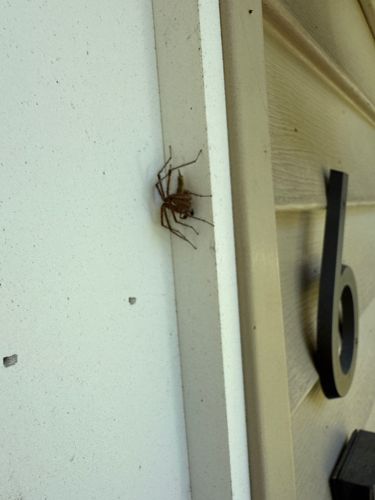Huntsman Spider
Scientific Name: Sparassidae (family), likely Heteropoda sp.
Order & Family: Order Araneae, Family Sparassidae
Size: Body length typically 15-35 mm (0.6-1.4 inches), with leg spans up to 15 cm (6 inches) or more for larger species.

Natural Habitat
Typically found in tropical and subtropical regions. They often hide under loose bark, in crevices, under rocks, or behind wall hangings. They frequently enter homes and vehicles.
Diet & Feeding
Primarily carnivorous, preying on insects (such as cockroaches and crickets) and other invertebrates. They are active hunters, ambushing their prey rather than building webs for capture.
Behavior Patterns
Huntsman spiders are known for their speed and agility. They do not build extensive webs for catching prey, but rather stalk and pounce on their meals. They are largely nocturnal but can be seen during the day. Females are known to guard their egg sacs and can be aggressive if provoked during this period.
Risks & Benefits
Risks: While their large size can be intimidating, Huntsman spiders are generally not considered dangerous to humans. Their venom is not highly toxic and a bite, though painful, typically causes only localized swelling, redness, and mild pain. Benefits: They are beneficial in controlling populations of common household pests like cockroaches and other insects.
Identified on: 9/28/2025